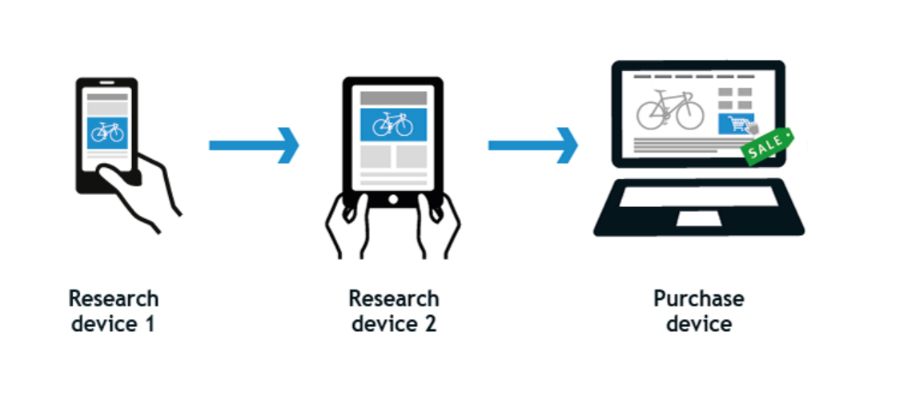With the proliferation of smartphones, tablets, laptops, and other connected devices, people no longer rely on a single device to access the internet. This shift in consumer behavior has made cross-device tracking a critical component of modern analytics. In this blog post, we will explore the significance of cross-device tracking in analytics and why it’s essential for businesses striving to understand their audience better.
Understanding Cross-Device Tracking
Cross-device tracking refers to the practice of monitoring and analysing user interactions across multiple devices and platforms.
Gone are the days when people exclusively used desktop computers to access the internet. Today, users seamlessly switch between devices depending on their context and needs. For example, they might start browsing a product on their smartphone during their commute, continue on their work computer during lunch break, and finally make a purchase on their tablet in the evening.
Cross-device tracking allows businesses to connect the dots between different touchpoints in a user’s journey, providing a more comprehensive view of their behavior. This information is invaluable for optimising marketing strategies, improving user experiences, and making data-driven decisions to engage with their audience effectively.

Improved User Experience
One of the most significant benefits of cross-device tracking is the ability to enhance the user experience. When businesses have a holistic view of user behavior, they can create personalised and consistent experiences across devices. For instance, a user who frequently visits a website on their smartphone can be greeted with tailored content and recommendations when they switch to their laptop, improving engagement and satisfaction.
Enhanced Marketing Strategies
Cross-device tracking is a goldmine for marketers. It enables them to attribute conversions and actions to the correct source, giving them a clearer picture of which marketing channels are driving results. This data-driven approach allows businesses to allocate their resources more efficiently and refine their marketing strategies for better ROI.
Implementing Cross-Device Tracking
To effectively implement cross-device tracking, businesses can employ various tools and techniques:
- User IDs: Assigning unique user IDs to individuals can help track their interactions across devices.
- Cookies: First-party cookies and consent-based tracking can provide valuable insights while respecting user privacy.
- Device Fingerprinting: This technique involves identifying devices based on various parameters like IP address, screen size, and operating system.
- Login Systems: Encouraging users to create accounts or log in can provide more accurate tracking.

In the digital age, understanding how users interact with your brand across different devices is essential. Cross-device tracking empowers businesses to make informed decisions, improve user experiences, and optimise marketing efforts. However, it’s crucial to strike the right balance between tracking and privacy to maintain user trust. By leveraging cross-device tracking effectively, businesses can stay competitive and relevant in an ever-evolving digital landscape.

